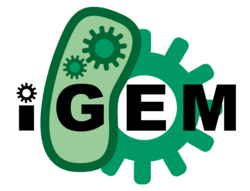Team:METU/Results
From 2012.igem.org
Isolation of CODH genes from Mycobacterium bovis:
CODH (carbon monoxide dehydrogenase) is an enzyme that catalyzes the reaction that converts CO to CO2. In BCG strain of Mycobacterium bovis the enzyme has 3 domains medium, small and large which the proteins are expressed from the cox operon which includes 3 genes that are successively expressed. In the tuberculosis vaccine which HIFZISSIHHA provided us, there are weakened tuberculosis bacteria that are our target bacteria Mycobacterium bovis BCG. In large chain gene of the operon there is a XbaI cut site (654-660 bp). Therefore, we cannot directly ligate the genes with the biobricks. In order to get rid of the cut site, we designed 2 different set of primers, 1 set for producing whole 3 genes from start of first gene to the XbaI cut site, and the second set for producing the rest of large chain gene, the site from the XbaI cut site to stop codon. By this way, we also changed internal cut site with primers. Therefore, at the end of the colony PCR we expect to see the whole operon as 2 different pieces:

( Here you can find more information about the enzyme and the domains;
Medium Chain: http://www.ncbi.nlm.nih.gov/gene/11808648
Small Chain: http://www.ncbi.nlm.nih.gov/gene/11808647
Large Chain: http://www.ncbi.nlm.nih.gov/gene/11808646 )
To obtain these genes, we prepared 6 different mixtures from BCG vaccine with different primer sets, and we performed colony PCR. According to colony PCR results we expect to see 2 pieces of the operon which are nearly 2000 bp and 1800 bp. As you can see from the gel photo, in 2 wells (well-3 and well-6) we saw the pieces around 1800bp as we expected. And in 1 well (well-5) we saw the piece around 1800 bp. Thus, we understood that these are our pieces. In 3 well (well-1, well-2 and well-4) we couldn’t see any band. This must be caused from low efficiency of colony PCR and using vaccine as template.

To be sure and to add biobrick cut sites to pieces, we performed second PCR from our colony PCR samples. In the second set of PCR we planned to ligate the biobrick sites to the ends of the CODH gene.
However, since inside the gene we have a cut site, while getting rid of that, we also added the cut site sequence to ends to ligate two pieces after. So, with that change we got ACTAGA sites between two pieces which encodes Theronine and Arginine aminoacids. As we searched, we find that this excess aminoacids doesn’t change enzyme activity since they are not in critical positions.

After the second PCR, at the first 6 wells we can see that 2000bp piece of our operon, is cloned with RBS region in front of operon and biobrick sites. At the wells 7,8 and 9, the second piece of the operon (~1800 bp) is cloned with biobrick sites.
Finally, we cut 2 pieces with classical digestion methods and ligate them to obtain the cox operon which encodes CODH enzyme.
References
http://www.ncbi.nlm.nih.gov
 "
"

